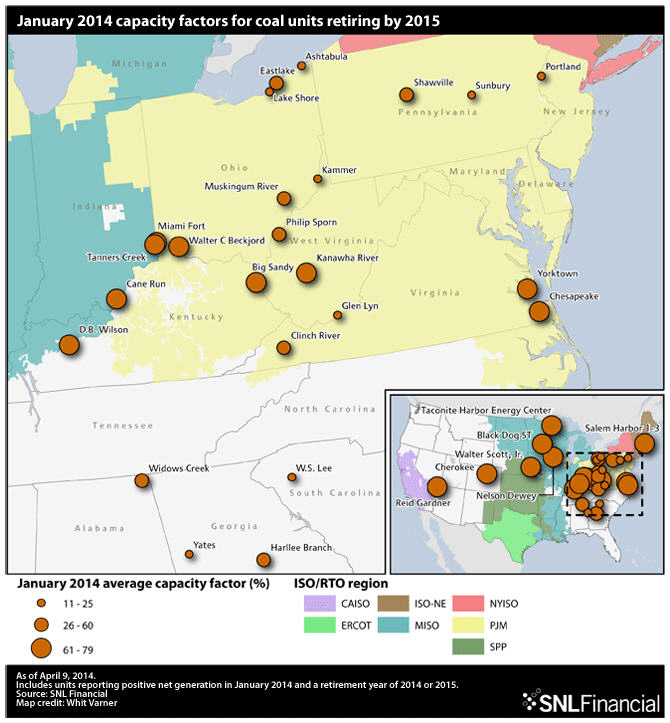SNL Energy: Cold January boosted capacity factor of retiring coal plants above 50%
Even with their retirement looming, a cold January — particularly across the coal-heavy Midwest, Mid-Atlantic and Southeast regions — prompted an increased reliance on units slated to retire by the end of 2015, according to an analysis by SNL. Energy.
Energy.
A full 81% of coal-fired capacity slated to be retired by the end of 2015 produced positive net generation in January, according to the analysis, lining up closely with American Electric Power Co. Inc. CEO Nicholas Akin’s statement in January that 89% of the AEP coal fleet scheduled for retirement by mid-2015 was required to run during the winter.
The 13,298 MW of coal-fired capacity retiring before 2016 generated 5,126,948 MWh during January, for an average capacity factor of 51.82%, jumping 17.64 percentage points from the 34.18% January 2013 average capacity factor.
While the National Oceanic and Atmospheric Administration reported overall average temperatures for the contiguous United States just 0.1 degree F below the 20th-century average in January, power demand prompted by cold temperatures across the East resulted in an increase use of the coal plants set to be retired. The cold weather, caused at least in part by a polar vortex, also boosted demand for natural gas to heat homes, increasing prices in many areas and shifting economics further in favor of the coal fleet.
According to NOAA, below-average temperatures “dominated” areas east of the Rockies, particularly the coal-heavy Midwest, Mid-Atlantic and Southeast regions. The Northeast was 4.1 degrees F cooler than normal, the Midwest average as much as 5 to 10 degrees below normal for three of the weeks in the month, and was “exceptionally cold” across much of the Southeast with monthly temperatures 3 to 5 degrees F below average in many states.
NOAH’s Residential Energy Demand Temperature Index showed energy demand was 38% above average and the 17th highest since 1895.
{{ commodity.name }}
{{ post.title }}
{{ post.date }}

Comments